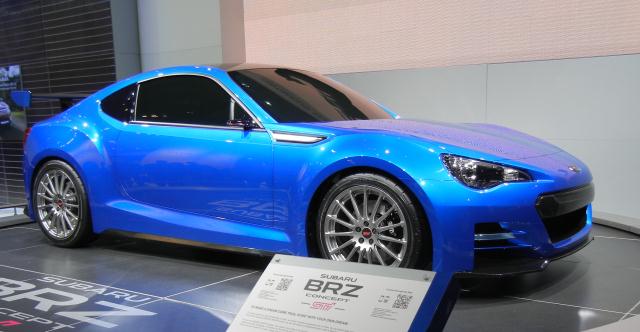The
2013 Tesla Roadster is a battery electric vehicle (BEV) sports car produced by the electric car firm Tesla Motors in California between 2008 and 2012.
The Roadster was the first highway-capable all-electric vehicle in serial production
for sale in the United States in the modern era. Since 2008 Tesla has
sold more than 2,400 Roadsters in 31 countries through September 2012.
Tesla began producing right-hand-drive Roadsters in early 2010.
The Roadster has a base price of
US$109,000 in the United States,
GB£86,950 in the United Kingdom, A$191,888 in Australia, and €84,000 in continental Europe.
As an electric vehicle, the Roadster also qualifies for several government incentives in many nation
s. In 2013 this car will be great alternative sport car.
Battery system
Tesla Motors refers to the Roadster's battery pack as the Energy Storage System or ESS. The ESS contains 6,831 lithium ion
cells arranged into 11 "sheets" connected in series; each sheet
contains 9 "bricks" connected in series; each "brick" contains 69 cells
connected in parallel (11S 9S 69P). The cells are of the 18650 form-factor commonly found in laptop batteries. Sources disagree on the exact type of Li-Ion cells - GreenCar says lithium cobalt oxide (LiCo),
while researchers at DTU/INESC Porto state lithium manganese oxide (LMO).
LiCo has higher reaction energy during thermal runaway than LMO.
The pack is designed to prevent catastrophic cell failures from
propagating to adjacent cells (thermal runaway), even when the cooling
system is off.
Coolant is pumped continuously through the ESS both when the car is
running and when the car is turned off if the pack retains more than a
90% charge. The coolant pump draws 146 watts.
A full recharge of the battery system requires 3½ hours using the
High Power Connector which supplies 70 amp, 240 volt electricity; in
practice, recharge cycles usually start from a partially charged state
and require less time. A fully charged ESS stores approximately 53 kWh
of electrical energy at a nominal 375 volts and weighs 992 lb (450 kg).
Tesla Motors stated in February 2009 that the current replacement
cost of the ESS is slightly under US$36,000, with an expected life span
of 7 years/100,000 mi (160,000 km), and began offering owners an option
to pre-purchase a battery replacement for US$12,000 today with the
replacement to be delivered after seven years. The ESS is expected to
retain 70% capacity after 5 years and 50,000 miles (80,000 km) of
driving (10,000 miles (16,000 km) driven each year). Tesla Motors
provides a 3 year/36,000 mile warranty on the Roadster with an optional 4
year/50,000 mile extended warranty available at an "additional cost"
(2008 Roadster buyers received the 4/50 extension at no cost while later
purchasers need to pay). A non-ESS warranty extension is available for
US$5,000 and adds another 3/36 to the coverage of components, excluding
the ESS, for a total of 6 years for 72,000 mi (116,000 km).
Recharging
The Tesla Roadster uses a proprietary charging connector, although Tesla sells a mobile adapter that enables recharging with an SAE J1772-2009 connector.
The vehicle can be recharged using:
- A wall-mounted 208–240 V, 70 A maximum current Home Connector. This appears to be an OEM version of the TS-70 charging station from ClipperCreek.
- A portable 120–240 V, 40 A maximum current Universal Mobile Connector cable that can plug into a NEMA 14-50 receptacle and other 240V receptacles using adapters.
- A portable 120 V, 15 A maximum current Spare Mobile Connector cable that plugs into a standard North American domestic socket.
Charging times vary depending on the ESS's state-of-charge, the
available voltage, and the available circuit breaker amp rating (current).
In a best case scenario using a 240 V charger on a 90 A circuit
breaker, Tesla documents a recharging rate of 56 miles (90 km)-of-range
for each hour charging; a complete recharge from empty would require
just under 4 hours. The slowest charging rate using a 120V outlet on a
15 A circuit breaker would add 5 miles (8.0 km)-of-range for each hour
charging; a complete recharge from empty would require 48 hours.
READ MORE - 2013 Tesla Roadster
.jpg)









